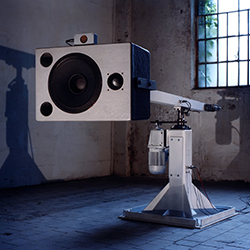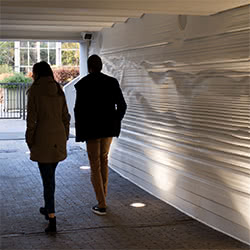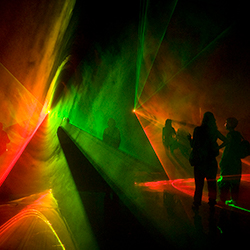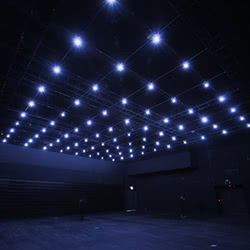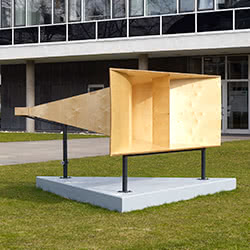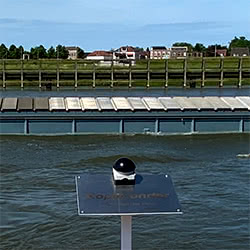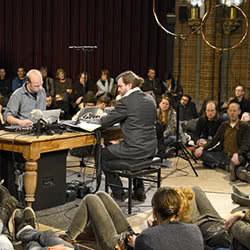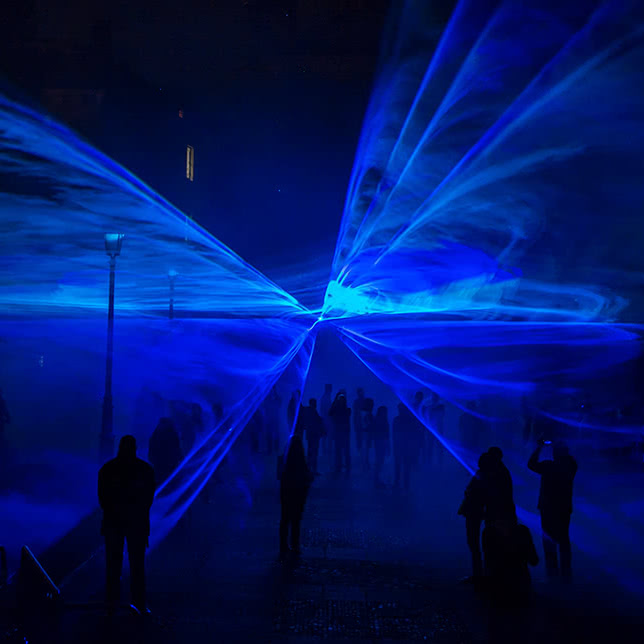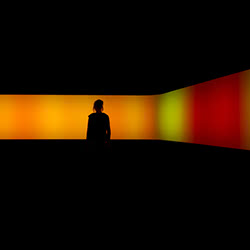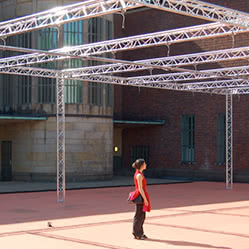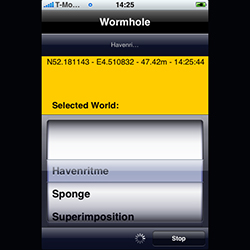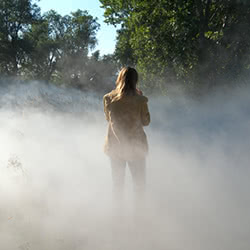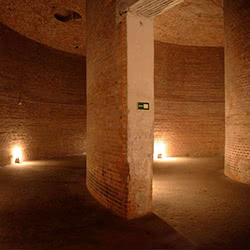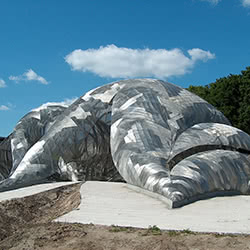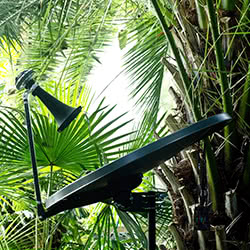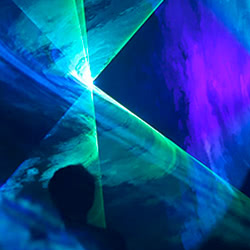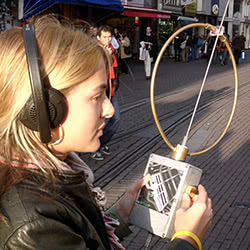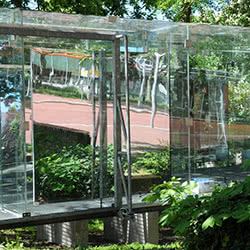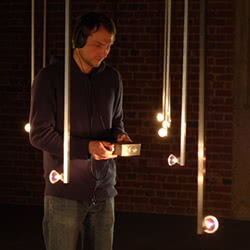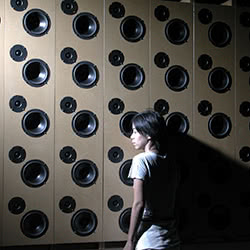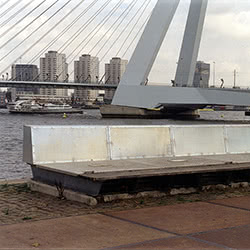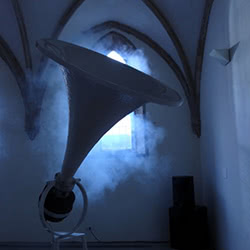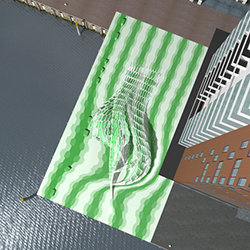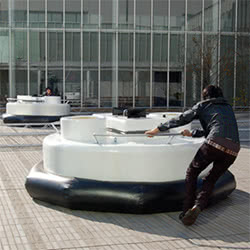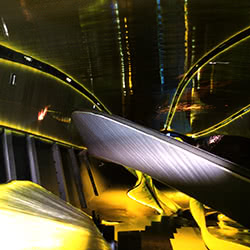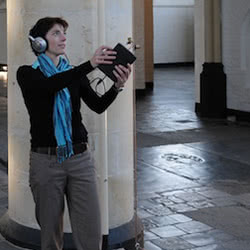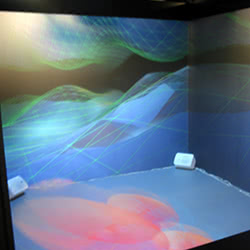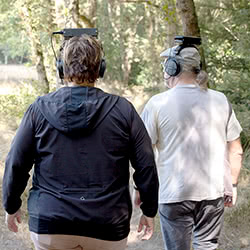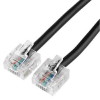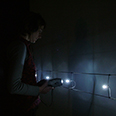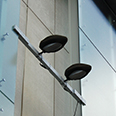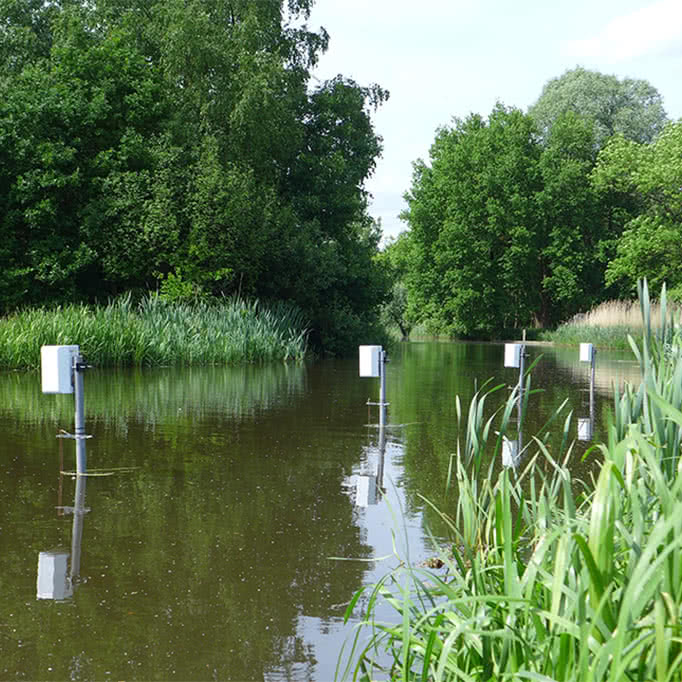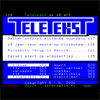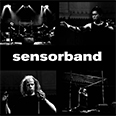From 1993 to 1997 I have been experimenting with musical performances that are based on interconnecting two players at physically different performance locations in order to play together with each other. Seen from my perspective I was playing together with a second performer on a different location. Bidirectional video and audio connections were realized by making use of an ISDN based teleconferencing system. The ISDN lines were not used to connect to the internet but to make a direct digital connection between both locations; a connection similar to a telephone connection but for digital information. The bandwidth of such a connection was low in comparison to today’s internet connections and therefore resulting in a low-quality video connection and a medium quality audio connection. From watching television we were used to having good quality live connections to locations all over the world but being able to make a connection yourself was something new and exciting. Because of the low quality connection the distance between the locations seemed to be emphasized and it felt a bit like making a connection to the moon.
From the beginning it was clear to me that it was important to integrate the physical distance in the musical concept and that it would be more interesting to focus on an improvisational approach instead of a strictly composed approach. The form of improvisation would have to incorporate the 'qualities' of the realized connection. The low-quality video connection and the time delay (approximately half a second per direction) were the main aspects that I decided to focus upon. While thinking about the possibilities of two interconnected performance locations I realized that the piece 'Overspel' that I created in 1991/1992 was very suitable for extending it in this direction.
'Overspel' has the following concept: A percussion player is playing two cymbals. The sound of the cymbals is picked up by a microphone that is providing the input signal for my instrument. My instrument is not a sound generating instrument but should be seen as a real time sound processing instrument. The instrument is a combination of the midi-conductor (a sensor-based controller derived from 'the hands' of Michel Waisvisz) and custom developed digital signal processing software. It's my output signal that is connected to the sound system in the space. The sound from the cymbals itself is not amplified.
For 'Overspel' I sometimes use the metaphor of playing one instrument by two people, not like playing quatre mains on the piano, but more like one player playing the bow of the violin while the other player plays the neck of the violin. Together you're responsible for the sounding result of the piece. The performance is an improvisation focusing on parallel and contradictory musical movements and developments between the players.
When I started to think about the interconnected performance locations I realized that the concept of 'Overspel' would lead itself very well for such an approach. Instead of working with percussion I decided to invite Camel Zekri to play semi-acoustic guitar. Camel was playing his guitar at his location and sending his sound to my location where I was processing the signal in real time. The output of my instrument was both amplified for me and the audience at my location and send back to Camel. Over there it was this signal that was amplified for Camel and the audience over there. The sound from the acoustic guitar itself was not being amplified. In both locations we used the video connections to project the other player next to the real player on stage.
Coming back to the metaphor of playing one violin by two performers you could now say that the violin was stretched out over the distance between the two locations with the bow being at one location and the neck being at the other location. The problem of playing one instrument with two people was being enlarged by turning it into a performance that uses different locations for the two performers. This is the main subject of the piece.
In 1994 we did our first performance between the Gertrude Stein Theatre/HERE in New York City and the Martel loft in Paris. The event was called 'Here & There' and was presenting multiple pieces focusing on playing together on two different locations.
In 1997 I started to extended the experiments with interconnected performers using direct ISDN connections into the direction of network-based performances using the internet.
Edwin van der Heide| concept: | Edwin van der Heide |
| performers: | Edwin van der Heide & Camel Zekri |
| partners and collaborators: | Atau
Tanaka Les Virtualistes (Pascal Schmidt & Christine Treguier) Sheldon Steiger |
| keywords: |
| concept: | Edwin van der Heide |
| performers: | Edwin van der Heide & Camel Zekri |
| partners and collaborators: | Atau
Tanaka Les Virtualistes (Pascal Schmidt & Christine Treguier) Sheldon Steiger |
| keywords: |
